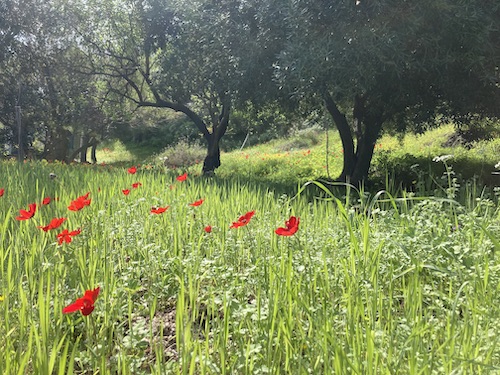This year Orthodox Lent starts one week after Ramadan begun: March 18. Catholic Lent already started on February 14. For both Catholics and Orthodox Lent starts more than 40 days before Easter. But the Orthodox calculate the date for Easter according to the Julian calendar, the Catholics according to the Gregorian calendar: the result being that only once in every four years do both Easters happen on the same day. To further complicate things, the Muslims use another calendar: their 30 days Lent starts in the ninth month of the Islamic calendar (what can be in quite a different period, according to the Gregorian calendar).
Muslims are not supposed to eat anything from sunrise to sunset. Fasting Catholics should eat modestly for 40 days, with no alcohol and no meat on the Fridays and on Ash Wednesday. During their 40 days of Lent Orthodox are not allowed to eat anything that contains blood, so — no meat or fish.
Food for Lent
I have been raised as a catholic and as a child I also had to fast. You got a Lent Box into which all your candy disappeared. You were only allowed to open the box on Sunday (in some families even not until Lent was over). Then the feast started and you’d eat all until you got belly ache, even though by then most candy was congealed into one messy lump of licorice and wine gums. I wonder if Lent Boxes still exist and if the Catholics are still as strict on the rules of Lent.
In Greece Lent (Sarakosti) is still a serious matter, although, even here not all the rules are followed anymore. Before Lent starts there is a week when people eat heaps of meat and celebrate Carnival. Clean Monday (Kathara Deftera) is the first day of Lent. In fact, it’s another celebration day: kites are freed into the sky and picnic baskets are filled with delicacies. Although nowadays it’s not so much blankets, spread as a tablecloth, over the grass as restaurants having a bumper day and the packed tables remind you of anything other than Lent. Vast amounts of shellfish are eaten this day, as well as Tarama (fish egg salad), beans, tzatziki, roasted bread and heaps of salads.
Chorta
Lent is the best time for eating wild vegetables: agrio chorta. In fact the period for chorta already started in January, when everthing ‘green’ wriggles out of the earth. This is when people appear shuffling through the fields with a knife in one hand and a plastic bag in the other, — hunting for the young leaves of chorta. Popular are radikia (dandelion – Taraxacum officinale) and vlita (purple amaranth, Amaranthus Blitum), a symbol of immortality for the ancient Greeks. Greeks do not like nettle soup, but do love Black Nightshade (Solanum nigrum). It is said that this plant and its berries are poisonous. It however is a vegetable widely spread throughout the world. In Greece it is called stifnos and, like most chorta, cooked and served as a salad (or used in vegetable pies). Chorta contain lots of antioxidants and many minerals, like calcium, iron, magnesium, sodium and potassium to be easily absorbed. A large splash of olive oil allows all that healthy stuff to be easily absorbed. A few drops of lemon enhances the taste.
Not too long ago there were so many groups of chorta hunters chasing through the fields and mountains that you wondered if any greens would be left. Nowadays the chorta collectors in spring more and more only look for sparangi (wild asparagus, Asparagus acutifolius). It is good that, especially during Lent, many taverns still have chorta on their menu and for sure that doesn’t come from the supermarket. Probably they sent grandma out into nature, armed with a knife, to fill some bags.
Gaza Strip
The earth on Lesvos seems inexhaustible and keeps on producing plants. The young shoots are so bright green that it hurts the eyes, in contrast to the grayness in the Gaza Strip. Ramadan or not, masses of people wander along the dusty landscape, looking for any little green loot, to make a poor soup. No fancy green landscape full of edible plants there. Gaza only grows hunger and desperation.











